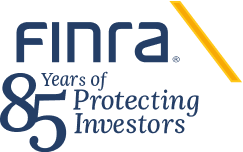Keeping crypto assets safe involves a different set of challenges than keeping your cash, stocks or bonds secure. It’s important to learn about the different ways to store crypto assets.
Suitability obligations are critical to ensuring investor protection and promoting fair dealings with customers and ethical sales practices. FINRA Rule 2111 governs general suitability obligations, while certain securities are covered under other rules that may contain additional requirements.
FINRA Rule 2111 requires that a firm or associated person have a reasonable basis to believe a recommended transaction or investment strategy involving a security or securities is suitable for the customer. This is based on the information obtained through reasonable diligence of the firm or associated person to ascertain the customer’s investment profile.
The rule states that the customer’s investment profile “includes, but is not limited to, the customer’s age, other investments, financial situation and needs, tax status, investment objectives, investment experience, investment time horizon, liquidity needs [and] risk tolerance,” among other information. A broker’s “recommendation,” which is based on the facts and circumstances of a particular case, is the triggering event for application of the rule.
Brokers must have a firm understanding of both the product and the customer, according to Rule 2111. The lack of such an understanding itself violates the suitability rule.
If you own crypto assets, or are considering doing so, it’s valuable to have at least a basic understanding of blockchain, the technology protocol that powers most cryptocurrencies, including bitcoin and ethereum. Blockchain uses computer code to create, maintain and update information shared by blockchain participants.
The Technology Management topic of the 2025 FINRA Annual Regulatory Oversight Report (the Report) informs member firms’ compliance programs by providing annual insights from FINRA’s ongoing regulatory operations, including (1) regulatory obligations, (2) findings and effective practices, and (3) additional resources.
The Consolidated Audit Trail (CAT) topic of the 2025 FINRA Annual Regulatory Oversight Report (the Report) informs member firms’ compliance programs by providing annual insights from FINRA’s ongoing regulatory operations, including (1) regulatory obligations, (2) findings and effective practices, and (3) additional resources.
The Net Capital topic of the 2025 FINRA Annual Regulatory Oversight Report (the Report) informs member firms’ compliance programs by providing annual insights from FINRA’s ongoing regulatory operations, including (1) regulatory obligations, (2) findings and effective practices, and (3) additional resources.
Firms have shared the following ways they have used prior FINRA publications, such as Exam Findings Reports, Priorities Letters and Reports on FINRA’s Examination and Risk Monitoring Program, to enhance their compliance programs. Firms may consider these practices, if relevant to their business model. We welcome feedback on how our firms use FINRA publications.Assessment of Applicability:
Please see attached SIFMA's letter in response to Regulatory Notice 24-13. Thank you.
FINRA Rule 4230(a) requires clearing firms for which FINRA is the designated examining authority pursuant to SEA Rule 17d-1 to submit requests for extensions of time as contemplated by Regulation T of the Board of Governors of the Federal Reserve System (Regulation T) and SEA Rule 15c3-3(n) to FINRA for approval.
